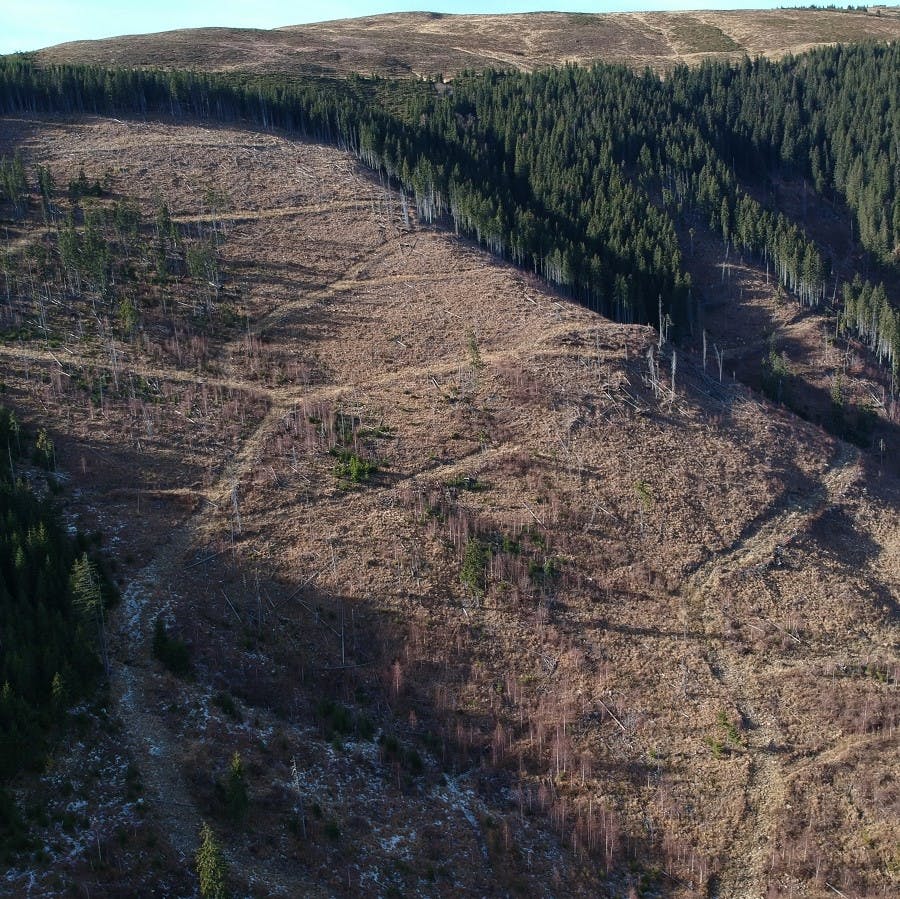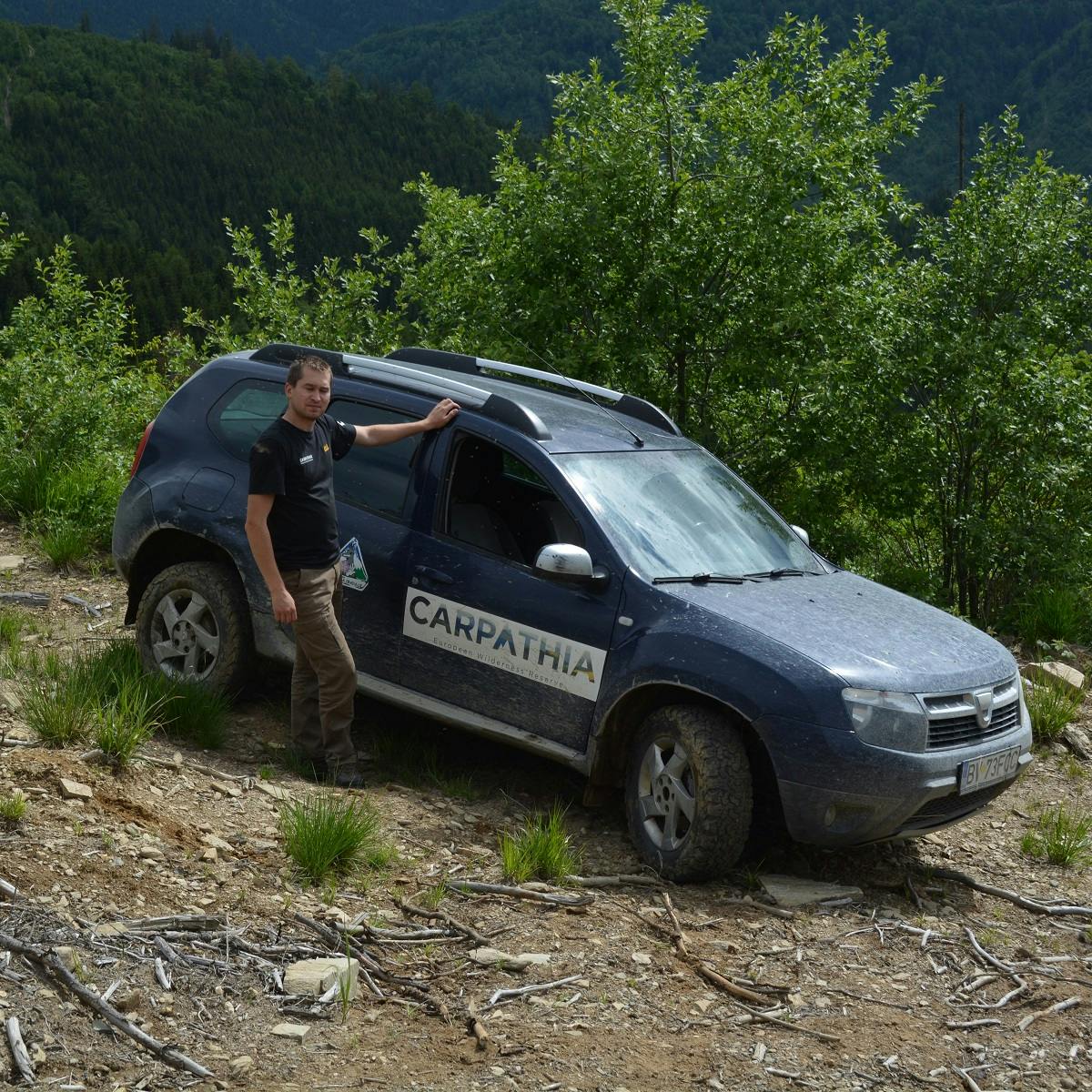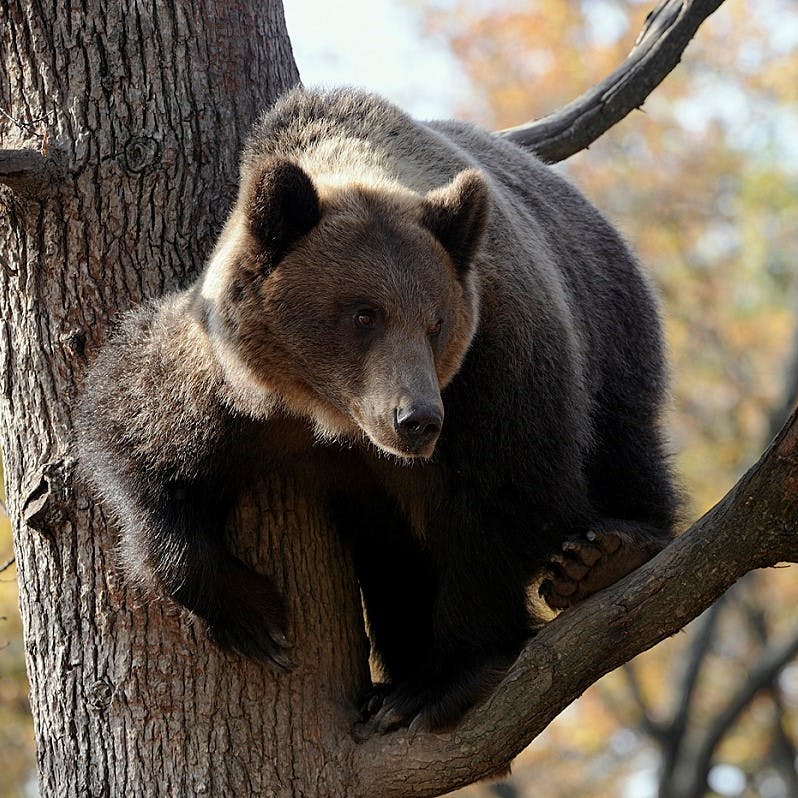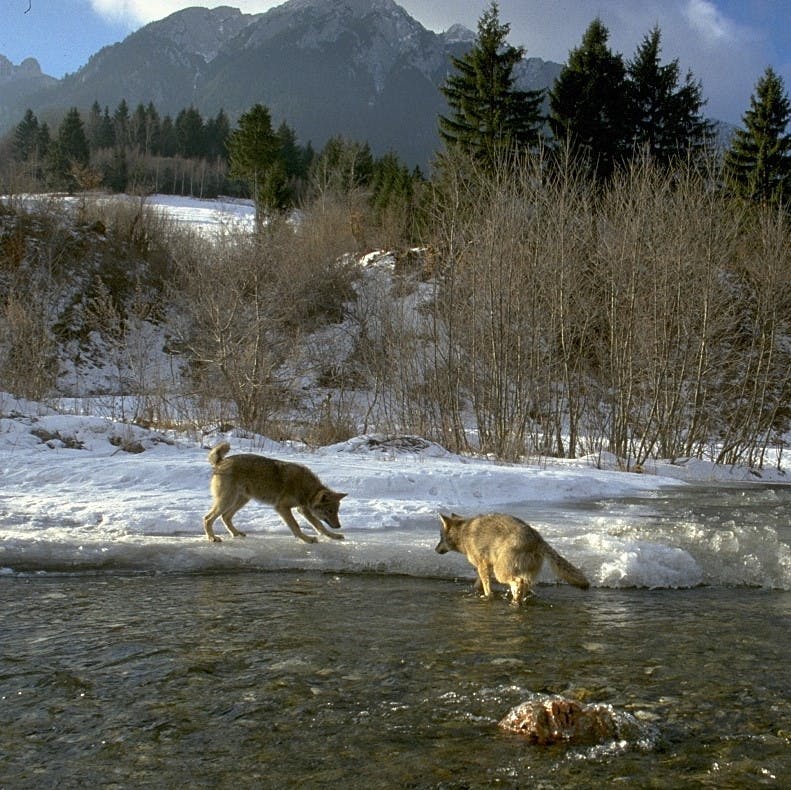Romania’s natural world is arguably one of Europe’s last true wilderness areas. Old-growth forests blanket vast mountain ranges that stretch across the country. They offer refuge for European wildlife in an otherwise densely populated and highly developed continent. Wolves, bears, and lynx all thrive here. However, unsustainable logging and abusive exploitation practises have severely damaged thousands of hectares of forests and exposed vast areas of the mountainside to erosion. To protect this landscape and the diversity of species that depend on it from increasing human exploitation, Mossy Earth has partnered with Foundation Conservation Carpathia (FCC) in rewilding Romania.
Habitat Restoration
Though Romania still has much of its forest habitat intact, many areas are under immense pressure from unsustainable logging and exploitation practices. Huge areas of forest in the Carpathian Mountains are being cleared in their entirety, rather than selectively cutting a few trees over a larger area, a much more sustainable practice. As huge swathes of trees are cleared, the soil is left vulnerable to disastrous levels of soil erosion. To restore and rewild these clear-cut areas and improve the soil structure, the team surveys the area to assess the extent of the damage, the level of regeneration that is already taking place, and the absence of important species. Once this has been done, trees are grown in local nurseries until they are strong enough to be planted out in the field. Pioneer species are planted first to help restore the soil before a diversity of other species are planted that recreate the original forest composition.


Take action now
Do you want to have a direct impact on climate change? Sir David Attenborough said the best thing we can do is to rewild the planet. So we run reforestation and rewilding programs across the globe to restore wild ecosystems and capture carbon.
Get involvedRanger Patrols
An additional pillar of rewilding Romania is having a team of rangers on the ground. The rangers are recruited from the local community to carry out regular forest patrols in order to protect the old growth forests. Having a presence in the mountains helps protect these forests from illegal logging and deters poachers from illegal hunting. It also helps to connect the local community, who are hired as rangers, with the conservation of their natural environment. Moreover, much of the landscape under restoration is being incorporated into the Piatra Craiului National Park or an alternative protected status.

Wildlife Conservation
Once the clear-cut areas have been replanted and the trees have had time to grow, they will increase the habitat available for a diversity of species. Romania is home to a significant portion of the species that are threatened across Europe, many of them relying on these forest habitats for survival. The project also helps reconnect isolated forest patches so that animals can move safely across the landscape. To keep track of the species that are present in the region, camera traps are placed across the project area. This also allows the team to monitor wildlife movements, habitat use, and behaviour, and can inform estimates of population sizes and whether they are stable, increasing or decreasing.

A Wilder Future
There are many reasons to celebrate Romania's natural world. But, as the country continues to develop, the old-growth forests that have provided a wildlife refuge for Europe’s sensitive species are increasingly under threat. In partnership with Foundation Conservation Carpathia, we are working to restore clear-cuts in the Romania's Southern Carpathian Mountains. Our goal is to reverse the impacts of illegal logging that threaten these forests. With your support we can restore these degraded clear-cuts to healthy, functioning and biodiverse forests and protect Romania’s great wild spaces.

Glossary of terms
Erosion: Coming in several forms, it is where natural materials are, by forces such as wind, water and mass movement, transported. This can wear down rock, move soils or be caused by glaciers.
Biodiverse Forests: Forest habitats that can support a vast range of plant and animal species. If a forest is biodiverse, it denotes a healthy ecosystem where there is a high level of biological diversity, meaning an abundance of species, in healthy numbers with healthy genetics.
Habitat Restoration & Pioneer species: After incidences of the destruction of habitat and razing of forests, habitat restoration focuses on restoring the natural ecosystems, allowing the space and resources for animals to return. If the soil quality is too degraded, a pioneer species must be planted to enable soil recovery and facilitate the return of local native tree species.
Monoculture: They are farms and plantations that only grow a single species of plant for human use. They do not exist in nature and are often created at the expense of natural occurring ecosystems and habitats.
Soil Structure: It is essentially the make-up of the soil. It relates to the shape and size of the soil and how well it sticks together. It can range from crumbs, to large blocks of soil. The structure can also talk about how porous the soil is, and how air can pass through it.
Sources & further reading

- “The Carpathians – Europe’s only true wilderness” - The European Nature Trust
- “The race to save Romania’s forests: how illegal loggers lay waste to the wilderness” - The New Statesman
